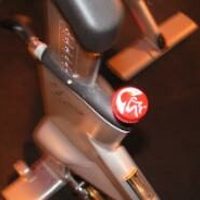How to Coach Resistance in Your Indoor Cycling Class, Part 4: Solving for X—Coaching Resistance with Cadence and Intensity as Your Guide
In part 3 of this series on cueing resistance, we discussed how to establish a baseline resistance in the warm-up, so your riders always begin with some load on the bike. This baseline sets the expectation that there is never a time to ride with zero resistance or allow the legs to flail at high cadences without control. It also gives your riders a consistent place to return to during recoveries and cool-downs.
In this article, we get to the crux of cueing resistance: coaching riders to find the right amount of load or gear that allows them to meet the goal you’ve defined for each segment of your ride.
Rather than relying on the tired “turn it up” cue, you’ll learn to guide riders with a simple but powerful equation—one that helps them understand the relationship between cadence, resistance, and intensity. It’s not a literal formula with measurable numbers (like watts or newtons); instead, think of it as a theoretical model to help your riders grasp how changes in cadence and resistance interact to produce effort. I’ll also walk you through coaching scenarios that bring this equation to life in your classes.
For your review:
How to Coach Resistance in Your Indoor Cycling Class, Part 1
How to Coach Resistance in Your Indoor Cycling Class, Part 2
How to Coach Resistance in Your Indoor Cycling Class, Part 3


Thanks for the great series!!
In the 3rd paragraph under the “Intensity” it reads like there should be a couple links to articles on using power but I think those links are missing.
Thanks
“dial in small amounts of resistance to find that place that challenges you but doesn’t spit you out” Love this. We did VO2 Max intervals at different RPMs and my riders were amazed at how even though the end results (power) was the same the effort felt harder at different RPMs. Great educational moment for them.
Absolutely great article Jennifer thank you for publishing this.
Thanks John. I’ve taught this in workshops for years and have hinted at it in many articles, but this is the first time I’ve gone this in-depth into using this equation like this. I’ve found that it is a huge lightbulb moment for both instructors and students!